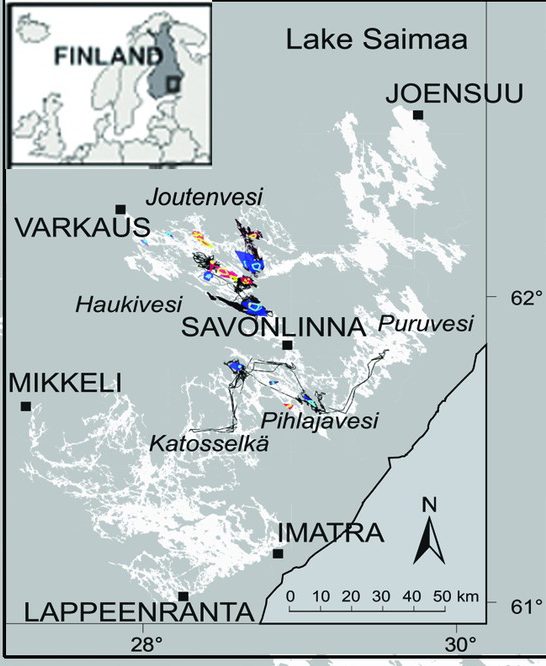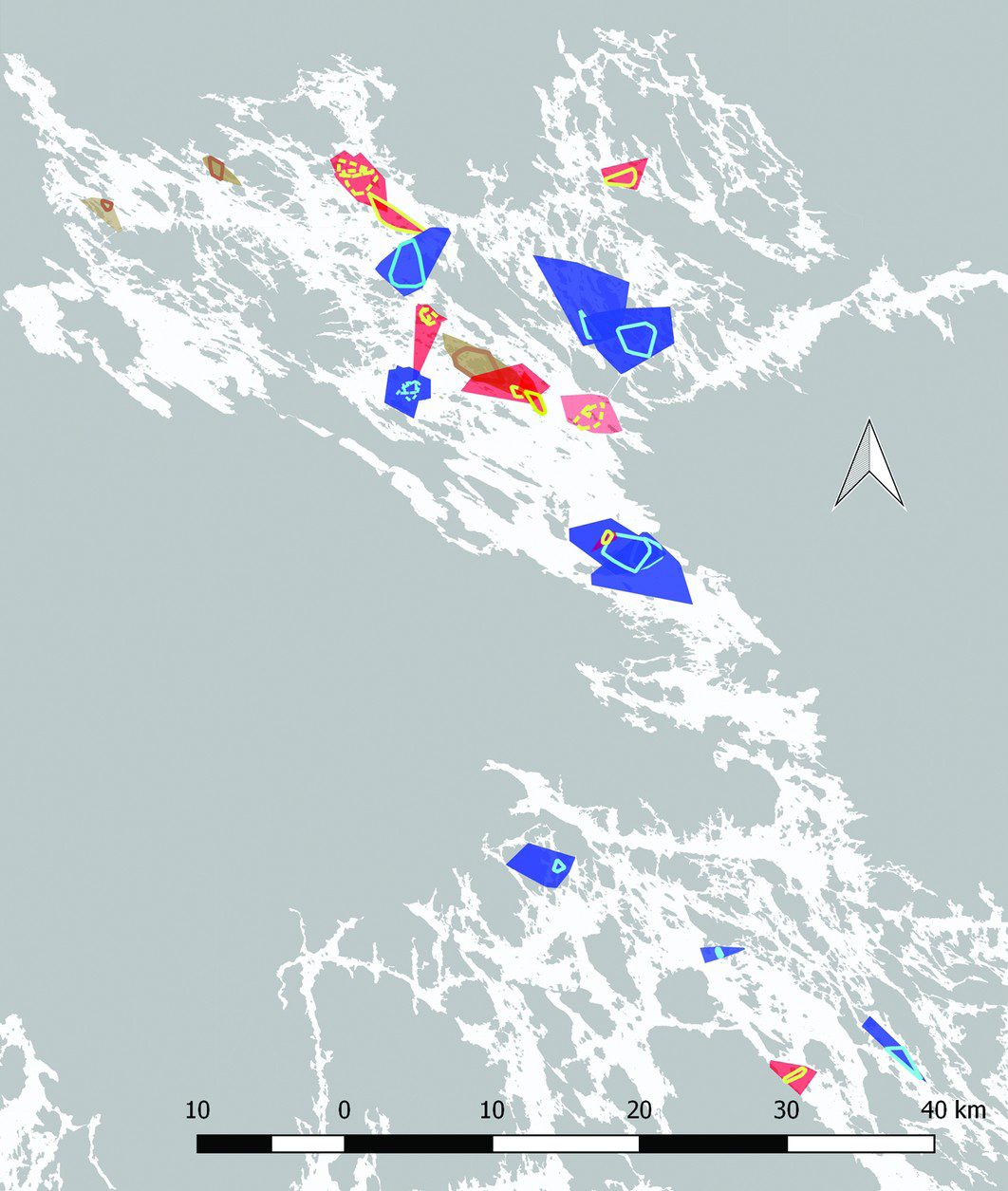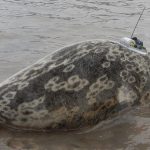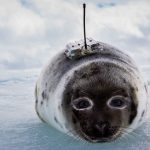← Back
Lake Saimaa ringed seals
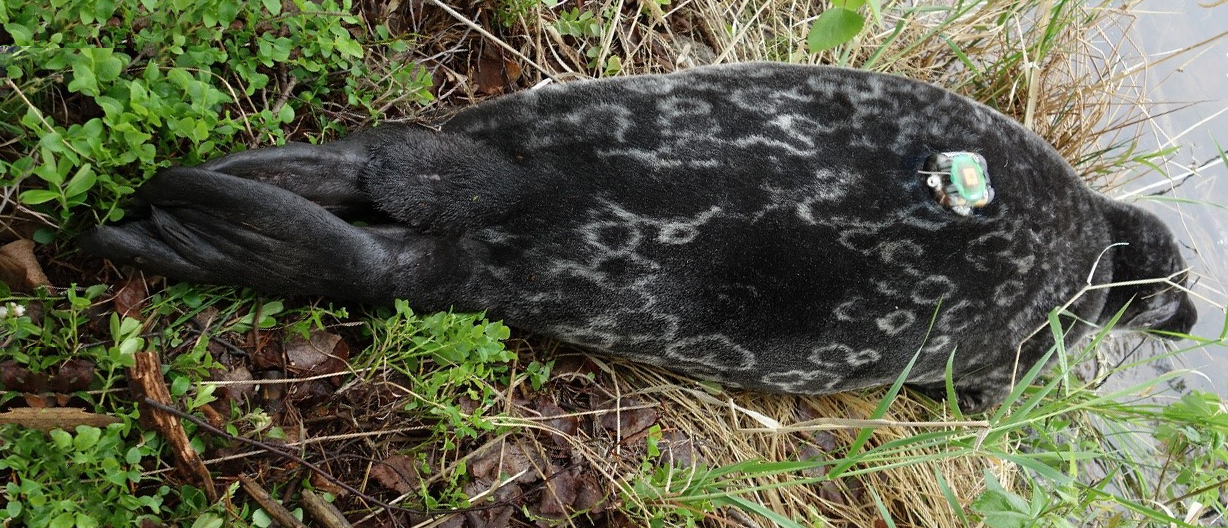
Ringed seals are living during winters in ice covered environment, both sea and lakes. One of the subspecies is living around Lake Saimaa in Southeastern Finland, where human activities are restricting their living areas and the population is endangered. The University of Eastern Finland has studied their movement using telemetry for over 10 years to better understand their behavior and conservation needs.
Seals living in freshwaters
During the winters ringed seals (Phoca hispida) live around landfast or heavy pack ice, where they maintain breathing holes. The freshwater ringed seal subspecies construct their lairs in snowdrifts formed on the shorelines of islands and islets. When sufficient snow accumulates, the seals dig lairs in the snow, covering their breathing holes. The lairs protect them from predators and from cold. They provide a sheltered platform for resting, but they are also used by females for giving birth and nursing of their pups. The importance of these lairs makes the ringed seals especially vulnerable to climate change i.e. premature ice break-up and lack of snow.
Lake Saimaa is situated in Southeastern Finland (61˚ 05’ to 62˚ 36’ N, 27˚ 15’ to 30˚ 00’E). It is 180 km long and 140 km wide with a mean depth of 12 m and a maximum depth of 85 m. The whole lake is normally covered in ice from December to beginning of May. It is the home of one of the ringed seal freshwater subspecies (Phoca hispida saimensis), with around 400 individuals. Ringed seals move less in the iced season, and lake seals are supposed to stay even closer. Moreover, they show a high fidelity to their breeding grounds from year to year.
More info about marine animals tracking
Saimaa ringed seal tracking
Between 1999 and 2017, tagged Saimaa ringed seals (10 males and 10 females) were tracked from late spring to the following winter, some using Argos satellite telemetry. The seals were captured and tagged at the end of the molting season in late May–early June and tracked during 258 to 471 days. The tracking data were analyzed with respect to their individual home range and helped locate some of the lairs. They confirmed some of the hypotheses — ice-covered season home range (approximately 7 km2) is 13 times smaller than the summer one (approximately 90 km2). Interannual breeding time site fidelity was also confirmed by this study, as the adult seals stayed in the same regions during two different breeding seasons. Hints of interactions between individuals were also noticed, with adult females’ core areas not overlapping. Additionally, some of the males seemed to have prepared breeding lairs for females.
Traditionally, the population size estimation has been based on lair censuses. The number of haul out sites (lairs used for rest) used by individual was higher (4.5, up to 10) and more distant form each other (1.6 km) than previously thought. Therefore, census based on lair counting has to be taken with caution.
Tracking individuals throughout the ice-covered seasons provided insights into the movements of the Saimaa ringed seal during the winter. The knowledge on the spatial movement patterns and home ranges is crucial when planning effective conservation measures and implementing sustainable land use planning in key habitats and seasons.
References
Niemi M, Liukkonen L, Koivuniemi M, Auttila M, Rautio A, Kunnasranta M (2019) Winter behavior of Saimaa ringed seals: Non-overlapping core areas as indicators of avoidance in breeding females. PLoS ONE 14(1): e0210266. https://doi.org/10.1371/journal.pone.0210266
Links :
Saimaa ringed seal research at the University of Eastern Finland: http://www.uef.fi/en/norppa
Project “Towards sustainable coexistence of seals and humans, CoExist”: http://www.uef.fi/en/coexist
FACEBOOK: CoExist: @CoExistCBC
TWITTER: @SaimaasealUEF and @CoExistCBC
Saimaa ringed seal tagged with a GPS-Argos tag (Wildlife Computers, USA), photo: Saimaa ringed seal research UEF.

